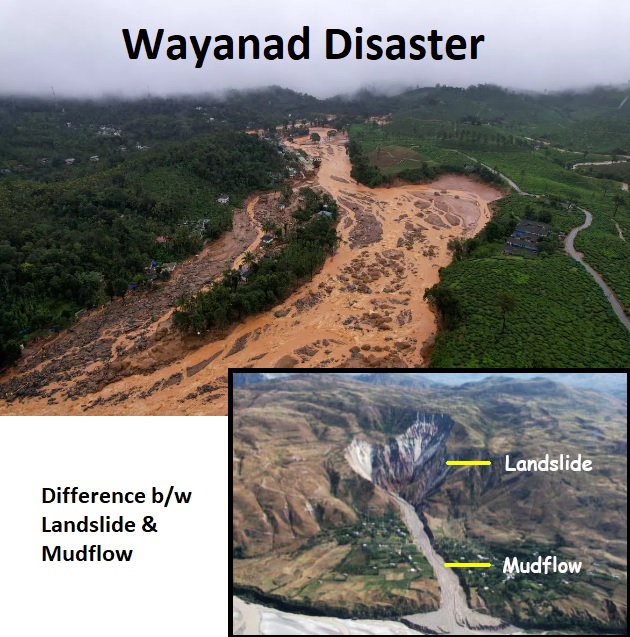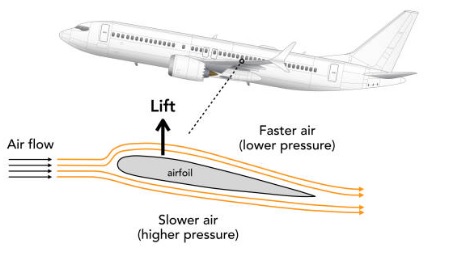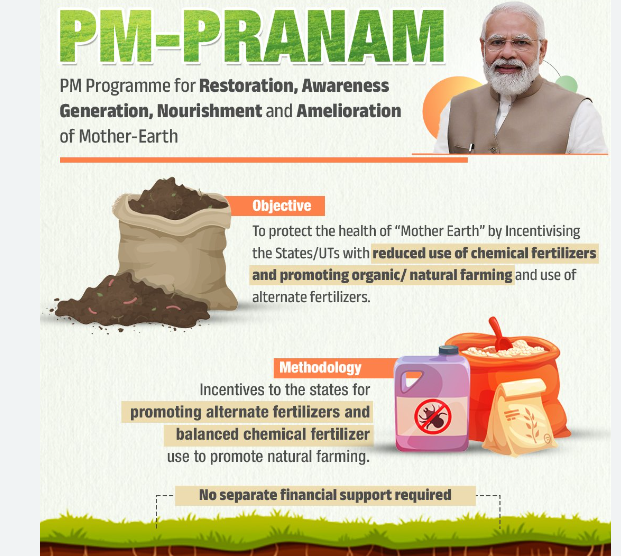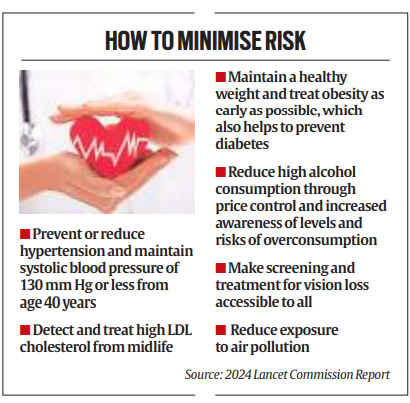31 July 2024 : Daily Current Affairs
1. 122 dead as landslides flatten Wayanad villages
(Source – The Hindu, International Edition – Page No. – 1)
| Topic: GS3 – Environment – Disaster and disaster management |
| Context |
|

Landslide and Disaster Management:
Reasons for Landslides
- Natural Causes:
- Heavy rainfall leading to soil saturation.
- Earthquakes causing ground shaking.
- Volcanic eruptions producing debris flow.
- Snowmelt adding water to soil.
- Human-Induced Causes:
- Deforestation weakening soil structure.
- Construction and mining activities disrupting the ground.
- Poor land use practices, such as improper agricultural techniques.
- Overloading slopes with infrastructure.
Disaster Management Preparedness
Before the Disaster
- Risk Assessment and Mapping:
- Identify landslide-prone areas using geological surveys and remote sensing.
- Create detailed hazard maps and land-use plans.
- Early Warning Systems:
- Install rainfall and ground movement sensors in vulnerable areas.
- Develop real-time monitoring systems and issue timely alerts.
- Community Awareness and Training:
- Conduct educational campaigns about landslide risks and safety measures.
- Train local communities in emergency response and evacuation procedures.
- Infrastructure Planning:
- Implement soil stabilisation techniques like terracing and retaining walls.
- Regulate construction activities in high-risk zones.
During the Disaster
- Emergency Response Activation:
- Mobilise National Disaster Response Force (NDRF) teams for search and rescue operations.
- Coordinate with local authorities and disaster management units for efficient response.
- Evacuation and Shelter:
- Execute pre-planned evacuation routes and relocate at-risk populations to safe shelters.
- Provide temporary shelters with basic amenities for displaced individuals.
- Medical Assistance:
- Set up medical camps to treat injured victims.
- Ensure rapid deployment of medical supplies and personnel.
After the Disaster
- Relief and Rehabilitation:
- Distribute food, water, and essential supplies to affected communities.
- Provide financial assistance and compensation to victims.
- Reconstruction and Restoration:
- Rebuild damaged infrastructure with improved design standards.
- Restore ecological balance through reforestation and soil conservation projects.
- Psychosocial Support:
- Offer counselling services to help victims cope with trauma.
- Implement community-based rehabilitation programs.
Ways to reduce instances of landslides:
- Afforestation: Planting trees and vegetation to stabilise soil and reduce erosion.
- Proper Drainage Systems: Installing drainage systems to manage water flow and prevent soil saturation.
- Slope Reinforcement: Using retaining walls, terracing, and other engineering techniques to stabilise slopes.
- Regulated Construction: Implementing strict regulations and guidelines for construction activities on slopes.
- Soil Conservation Practices: Adopting contour plowing, crop rotation, and other soil conservation techniques.
- Early Warning Systems: Developing and deploying landslide monitoring and early warning systems.
- Public Awareness: Educating communities about landslide risks and preventive measures.
- Reforestation: Restoring forests on degraded lands to enhance slope stability.
Steps Taken by the Indian Government
- Policy and Legislation:
- Enactment of the Disaster Management Act, 2005 to establish a legal framework.
- Creation of the National Disaster Management Authority (NDMA) for policy formulation.
- National and State Level Initiatives:
- Establishment of the National Institute of Disaster Management (NIDM) for training and research.
- Formulation of state disaster management plans and district-level disaster management authorities.
- Technology and Innovation:
- Utilisation of satellite imagery and GIS for risk assessment and monitoring.
- Development of mobile apps and portals for real-time disaster information and alerts.
- International Collaboration:
- Partnership with international agencies like UNDP for capacity building.
- Participation in global initiatives such as the Sendai Framework for Disaster Risk Reduction.
| PYQ: Disaster preparedness is the first step in any disaster management process. Explain how hazard zonation mapping will help in disaster mitigation in the case of landslides. (250 words/15m) (UPSC CSE (M) GS-3 2019) |
| Practice Question: Discuss the key strategies for effective disaster management in areas prone to landslides, focusing on prevention, preparedness, and response measures. (250 Words /15 marks) |
2. Kerala ignored recommendations to prevent such disasters, says Gadgil
(Source – The Hindu, International Edition – Page No. – 5)
| Topic: GS3 – Environment – Disaster and disaster management |
| Context |
|
Analysis of the news:
- Man-Made Tragedy: Ecologist Madhav Gadgil, former Chairman of the Western Ghats Ecology Expert Panel, labelled the Wayanad disaster as a man-made tragedy, attributing it to the Kerala government’s neglect of crucial ecological recommendations.
- Panel’s Recommendations: Gadgil criticised the State government for failing to implement the panel’s guidelines, which classified the affected region as highly sensitive and recommended restricting development in these areas.
- Development Concerns: He pointed out that the highly sensitive zones, once marked for preservation, had been extensively developed for tea plantations, resorts, and artificial lakes, contrary to the panel’s recommendations.
- Impact of Quarries: Gadgil noted that defunct quarries near the disaster site could have exacerbated the situation, with shockwaves from their operations potentially contributing to landslides during heavy rain.
- He accused the Kerala government of rejecting the panel’s report, which he believes led to recurring disasters in Wayanad and other regions.
- Gadgil stressed that without serious implementation of the panel’s recommendations and proactive measures, such disasters would continue, intensified by climate change effects like extreme rainfall and droughts.
| The Madhav Gadgil Committee Report, 2011 |
|
| PYQ: Differentiate the causes of landslides in the Himalayan region and Western Ghats. (150 words/ 10m)(UPSC CSE (M) GS-1 2021) |
| Practice Question: Examine the role of ecological mismanagement and inadequate disaster preparedness in the recent landslide in Kerala. What measures can be implemented to prevent such disasters in the future? (250 Words /15 marks) |
3. India’s open ecosystems facing an unusual threat: encroaching trees
(Source – The Hindu, International Edition – Page No. – 7)
| Topic: GS3 – Environment |
| Context |
|
Study Findings:
- A study published on June 5 in Global Change Biology by scientists from the Universities of Witwatersrand, Cape Town, and Oxford reveals that increased tree cover in open ecosystems, such as savannahs and grasslands, has led to a significant decline in native grassland birds.
- In the African Savannah, the population of grassland birds has decreased by over 20%.
Importance of Grasslands and Savannahs:
- Grasslands and savannahs cover nearly 40% of the earth’s surface and host diverse species, including large herbivores like elephants and rhinoceroses, and grassland birds such as bustards and floricans.
- These habitats are rapidly diminishing due to threats including intensive agriculture, erosion, development projects, and overgrazing, with woody encroachment being a less recognized threat.
Key threats to grasslands include:
- Conversion to agricultural lands.
- Intensive agricultural practices.
- Erosion and large-scale development projects.
- Overgrazing.
- Increasing tree cover, which is termed “woody encroachment.”
What is Woody Encroachment?:
- Woody encroachment is the conversion of open habitats into areas with increased tree and shrub density.
- This process results in the homogenization of ecosystems, changing them from diverse environments with grassy understories and sparse trees to ones dominated by woody plants.
- Natural disturbance regimes like grazing and fire, which traditionally maintained open ecosystems, are disrupted, allowing trees to proliferate.
Drivers of Woody Encroachment:
- Increased atmospheric carbon dioxide promotes tree growth over grasses due to the C3 photosynthetic pathway used by trees.
- Trees further suppress grasses through shading and fire suppression.
- Different regions experience various drivers of encroachment: fire suppression and habitat fragmentation in South America, carbon dioxide levels and rainfall variations in Australia and Africa.
Impact on Grasslands in India:
- Indian grasslands span various climatic regions, including arid areas, floodplains, and high-altitude zones, and are home to species like the Indian one-horned rhinoceros and Bengal florican.
- These grasslands are highly threatened and fragmented, exacerbating their vulnerability.
- A February 2023 study using remote-sensing data reported a 34% reduction in grassland habitats within national parks in India and Nepal, along with an 8.7% increase in tree cover.
Historical and Ongoing Threats:
- Colonial conservation policies deemed open ecosystems as “wastelands,” leading to their conversion to plantations and criminalising traditional practices like grazing and fire management.
- Modern perceptions of trees as carbon sinks contribute to the marginalisation of open ecosystems.
- Woody encroachment has significantly altered biodiversity, leading to declines in species dependent on open habitats.
Examples of Woody Encroachment:
- In southern Africa, the South African Bird Atlas Project 2 found a dramatic decline in open ecosystem birds, with 34 species’ declines linked to woody encroachment.
- In the Banni grasslands of Kutch, the invasive Prosopis juliflora, introduced for desertification control, has transformed large areas into Prosopis woodlands.
- Eucalyptus plantations in Shola grasslands and Malabar silk-cotton trees in Terai grasslands have also contributed to habitat degradation in India.
The Need for Further Research and Policy Change:
- Further evidence and long-term ecological monitoring are essential to understand the impact of woody encroachment on biodiversity.
- Detailed research will provide insights to inform effective conservation strategies and policy changes.
- Dismantling colonial-era terminologies and misclassifications that promote the conversion of open ecosystems is crucial for their protection.
Conclusion:
- While tree planting and carbon sequestration are valuable, balancing these efforts with the conservation of grasslands and savannahs is necessary to protect the unique species dependent on these habitats.
| Practice Question: Discuss the impact of woody encroachment on biodiversity in grassland and savannah ecosystems. How does this phenomenon affect species that rely on open habitats, and what measures should be taken to mitigate these effects? (250 Words /15 marks) |
4. Ministry of Mines Cancels Reasi Lithium Auction Twice Due to Lack of Investor Interest
(Source: Indian Express; Section: Explained; Page: 16)
| Topic: GS2 – Governance – Issues arising out of their design and implementation GS1 – Geography |
| Context: |
|
Analysis of News:
What is Lithium?
- Lithium (Li), sometimes also referred as ‘White gold’ due to its high demand for rechargeable batteries, is a soft and silvery-white metal.
- Extraction:
- Lithium can be extracted in different ways, depending on the type of the deposit — generally either through solar evaporation of large brine pools, or from hard-rock extraction of the ore.
Uses:
- Lithium is an important component of electrochemical cells used in batteries of EVs, Laptops, Mobiles etc.
- It is also used in thermonuclear reactions.
- It is used to make alloys with aluminium and magnesium, improving their strength and making them lighter.
- Magnesium-lithium alloy – for armour plating.
- Aluminum-lithium alloys – in aircraft, bicycle frames and high-speed trains.
Major Global Lithium Reserves:
- Chile > Australia > Argentina are top countries with Li reserves.
- Lithium Triangle: Chile, Argentina, Bolivia.
Lithium Reserves in India:
- Preliminary survey showed estimated lithium reserves of 14,100 tonnes in a small patch of land surveyed in Southern Karnataka’s Mandya district.
- Other potential sites:
- Mica belts in Rajasthan, Bihar, Andhra Pradesh.
- Pegmatite belts in Odisha and Chhattisgarh.
- Rann of Kutch in Gujrat.
Auction Challenges
- First Attempt: The first auction was annulled on March 13 after fewer than the required three bidders participated.
- Second Attempt: Despite removing the minimum bidder requirement, no qualified bidders participated in the second auction attempt.
Investor Concerns
- Extraction Difficulties: Challenges in extracting and processing lithium from hard rock pegmatite deposits deterred investors.
- Insufficient Data: The bid document lacked detailed information, and the block was considered too small for modern mining techniques.
- Beneficiation Study: No feasibility study had been conducted to assess lithium extraction and processing.
Need for Improved Reporting Standards
- Current Standards: India uses the United Nations Framework Classification (UNFC) for resource reporting, which lacks details on economic viability.
- International Standards: The Committee for Mineral Reserves International Reporting Standards (CRIRSCO) template is preferred globally for its detailed economic viability assessments.
- Recommendation: Experts suggest India should adopt CRIRSCO-aligned standards to attract private investment and ensure successful auctions.
Future Steps
- Further Exploration: The government may conduct more exploration to provide clarity on the resource.
- Government-led Development: The government might reserve the area for public sector development, as allowed by the Mines and Minerals (Development and Regulation) Act.
- Ongoing Efforts: While some lithium blocks have been successfully auctioned, many remain unallocated, and further attempts are planned.
Other Lithium Deposits in India
- Successful Auction: A lithium block in Chhattisgarh’s Korba district was successfully auctioned.
- Mixed Results: Exploration in other states like Manipur, Ladakh, and Assam has faced local resistance or yielded poor results.
Conclusion
- The repeated failure of the Reasi lithium block auction highlights the need for better exploration data, improved reporting standards, and potentially greater government involvement to attract investment and develop India’s lithium resources.
| How India Currently Fulfills its Lithium Demand? |
|
|
PYQ: Which one of the following pairs of metals constitutes the lightest metal and the heaviest metal, respectively? (2008) (a) Lithium and mercury (b) Lithium and osmium (c) Aluminium and osmium (d) Aluminium and mercury Ans: (b) |
| Practice Question: Discuss the challenges faced by the Indian government in auctioning critical mineral blocks, such as lithium, and the factors contributing to weak investor interest. How can improving resource reporting standards and exploration processes address these challenges? (250 words/15 m) |
5. High Temperatures in Leh Cause Flight Cancellations: A Growing Challenge for Air Travel Amid Climate Change
(Source: Indian Express; Section: Explained; Page: 16)
| Topic: GS3 – Environment GS3 – Science and technology |
| Context: |
|
Analysis of News:

Mechanism of Flight and Impact of High Temperatures:
Basic Flight Dynamics:
- Aircraft wings generate lift by creating a pressure difference between the upper and lower surfaces.
- This lift is essential for takeoff and sustained flight.
Effect of Temperature on Air Density:
- Higher temperatures reduce air density (fewer air molecules per volume).
- Lower air density means less lift is generated at a given speed, making it harder for planes to take off.
- Engines produce less thrust in thinner air, reducing overall aircraft performance.
Specific Challenges at High Altitudes:
- Leh, located at a high altitude, already experiences thinner air, exacerbating the effects of high temperatures.
- Aircraft require longer runways and more powerful engines in such conditions, which may not always be available.
Global Warming and Long-Term Implications:
- Rising global temperatures, partly due to global warming, are increasing the frequency of such issues.
- Studies indicate that aircraft takeoff performance is expected to worsen, requiring longer runways and lighter aircraft.
Solutions and Mitigation:
- Short-term: Schedule flights during cooler times, extend runway lengths, and reduce aircraft weight.
- Long-term: Reduce fossil fuel consumption to mitigate global warming effects.
| Practice Question: Discuss the impact of rising temperatures on aviation safety and operations, with a focus on high-altitude regions like Leh. What adaptive measures can be implemented to mitigate these effects, and how does this relate to broader climate change challenges? (150 words/10 m) |
6. Financial Assistance under PM-KISAN
(Source – https://pib.gov.in/PressReleseDetail.aspx?PRID=2039206 )
| Topic: GS2 – Governance – Government Policies |
| Context |
|
Analysis of the news:
- Launch and Purpose: The PM-KISAN scheme, launched in February 2019, aims to support land-holding farmers by providing financial assistance.
- Financial Benefit: Each eligible farmer receives ₹6,000 per year, distributed in three equal instalments.
- Nodal Ministry: The PM-KMY is a Central Sector Scheme administered by the Ministry of Agriculture & Farmers’ Welfare in partnership with LIC.
- Disbursement Method: Benefits are transferred directly to farmers’ bank accounts via Direct Benefit Transfer (DBT), ensuring a large-scale, efficient disbursement system.
- Coverage: Over ₹3.24 lakh crore has been disbursed to more than 11 crore farmers across 17 instalments.
- Responsibility: States/UTs are responsible for identifying and verifying eligible beneficiaries. Verified data is uploaded to the PM-KISAN portal for DBT transfers.
- Village Level Nodal Officers: These officers identify and onboard eligible farmers in their assigned villages.
- Registration Services: Farmers can register for the scheme at over 5 lakh Common Services Centers across the country, bringing registration services to their doorstep.
| Practice Question: Discuss the potential advantages of the PM-KISAN scheme for land-holding farmers in India. How does the scheme contribute to financial stability and agricultural productivity? (150 Words /10 marks) |
7. Impact of Climate Change on Farmers
(Source – https://pib.gov.in/PressReleseDetail.aspx?PRID=2039205 )
| Topic: GS3 – Agriculture |
| Context |
|
Impact of Climate Change on Indian Agriculture:
- Increased Weather Extremes: Climate change has led to more frequent and severe weather extremes, such as droughts, floods, heat waves, and cold waves, adversely affecting agricultural productivity.
- Crop and Livestock Stress: Changes in temperature and precipitation patterns stress crops and livestock, reducing yields and affecting quality. This can lead to reduced food security and income for farmers.
- Increased Vulnerability: Risk assessments show 109 districts as ‘very high’ and 201 as ‘highly’ vulnerable to climate change, indicating significant challenges for these regions in adapting to changing conditions.
- Soil Degradation: Extreme weather events contribute to soil erosion, reduced soil fertility, and increased salinity, impacting crop growth and productivity.
- Water Scarcity: Altered precipitation patterns and increased evaporation rates lead to water scarcity, affecting irrigation practices and crop yields.
- Pests and Diseases: Changes in climate conditions can lead to the proliferation of pests and diseases, further threatening crop and livestock health.
- Disruption of Traditional Practices: Traditional farming practices may become less effective, requiring adaptation to new climate-resilient techniques and technologies.
- Economic Impact: Reduced agricultural productivity and increased costs of adaptation and mitigation can lead to economic strain on farmers, impacting their livelihoods and rural economies.
Contribution of Indian Council of Agricultural Research (ICAR):
- Variety Development: Released 2,593 crop varieties from 2014-2024, with 2,177 tolerant to biotic/abiotic stresses.
- Risk Assessment: Conducted climate risk and vulnerability assessments for 651 districts, identifying 310 as highly vulnerable.
- Contingency Plans: Prepared District Agriculture Contingency Plans (DACPs) for extreme weather and climate events.
- Climate Resilient Villages: Implemented climate-resilient technologies in 448 villages across 151 districts.
- Capacity Building: Conducted training and awareness programs on climate resilience for farmers.
- NICRA Project: Launched National Innovations in Climate Resilient Agriculture to promote adaptive technologies.
| Practice Question: Discuss the contributions of the Indian Council of Agricultural Research (ICAR) under the NICRA project in enhancing climate resilience in Indian agriculture. (150 Words /10 marks) |
8. PM-PRANAM initiative aims to complement the efforts of States/UTs to save the health of Mother Earth
(Source – https://pib.gov.in/PressReleseDetail.aspx?PRID=2038958 )
| Topic: GS2 – Governance – Government Policies |
| Context |
|
PM-PRANAM Scheme:

- Objective: The scheme aims to promote sustainable and balanced use of fertilisers, adopt alternate fertilisers, and encourage organic and natural farming.
- Coverage: The initiative is applicable across all States and Union Territories (UTs) in India.
- Incentive Structure: States/UTs can receive 50% of the fertiliser subsidy savings if they reduce chemical fertiliser consumption (Urea, DAP, NPK, MOP) compared to the average consumption of the previous three years.
- Utilisation of Grant: The grant provided to States/UTs can be used for various benefits, including supporting farmers and enhancing agricultural sustainability.
- Purpose: The scheme aims to improve the health of the environment and support balanced agricultural practices.
9. GRAM MANCHITRA APPLICATION
(Source – https://pib.gov.in/PressReleseDetail.aspx?PRID=2039084 )
| Topic: GS2 – Governance – E-Governance |
| Context |
|
Gram Manchitra Application:
- Gram Manchitra: A GIS application launched by the Ministry of Panchayati Raj to support spatial planning at the Gram Panchayat level.
- Unified Platform: Provides a single geo-spatial platform to visualise and plan developmental works across various sectors.
- Decision Support System: Aids in preparing the Gram Panchayat Development Plan (GPDP) by offering planning tools.
- Integration with mActionSoft: Mobile-based solution for geo-tagging assets in three stages—before, during, and after work completion.
- Asset Repository: Geo-tagged assets related to natural resource management, water harvesting, and sanitation are available on Gram Manchitra.
- Planning Tools: Includes tools for site identification, asset tracking, cost estimation, and impact assessment of projects.
- Coverage: Used across all States and UTs under the Digital India Programme and e-Panchayat Mission Mode Project.
Prelims Facts
1. U.P. House passes Bill to amend law against conversion
(Source – The Hindu, International Edition – Page No. – 2)
| Context |
|
Uttar Pradesh Prohibition of Unlawful Conversion of Religion (Amendment) Bill, 2024:
- Enhanced Penalties:
- Introduces life imprisonment as the maximum penalty for deceiving and marrying a woman to illegally convert her religion.
- Increases imprisonment from 10 years to up to 20 years or life imprisonment for offences involving threats, attacks, or trafficking with the intent of conversion.
- Reporting and Legal Proceedings:
- Allows any person to register an FIR in cases of unlawful conversion, eliminating the need for the victim or her family’s presence.
- Mandates that cases be heard only in sessions courts, with bail pleas requiring the opportunity for the public prosecutor to be heard.
- Makes all offences under the Act non-bailable.
- Opposition Criticism:
- Opposition parties accused the ruling government of using the Bill to divert attention through communal politics.
- Concerns raised about potential increases in fake cases, with suggestions for accountability measures against police in cases where the accused is released.
2. United States overtakes UAE as India’s second largest LNG supplier
(Source – The Hindu, International Edition – Page No. – 13)
| Context |
|
Analysis of the news:
- In 2023, the U.S. became India’s second largest LNG supplier, surpassing the UAE with 3.09 million tonnes (mt) of LNG.
- The increase is attributed to weakening international LNG prices and India’s proximity to U.S. LNG via the Cape of Good Hope, reducing freight costs.
- The U.S. also became the world’s largest LNG exporter in 2023.
- Qatar remained the largest supplier to India, increasing shipments to 10.92 mt in 2023.
- African nations, notably Nigeria and Angola, saw a significant decrease in their share of LNG exports to India from 2.7 mt and 2.9 mt in 2019 to 0.73 mt each in 2023.
3. Untreated Vision Loss and High Cholesterol Identified as Key Dementia Risk Factors: 2024 Lancet Commission Report
(Source: Indian Express; Section: Express Network; Page: 13)
| Context: |
| A recent report from the 2024 Lancet Commission highlights untreated vision loss and high cholesterol as significant new risk factors for dementia, contributing to 9% of all cases. |
Analysis of News:
What is Dementia?
- It is a syndrome – usually of a chronic or progressive nature – that leads to deterioration in cognitive function (i.e. the ability to process thought) beyond what might be expected from the usual consequences of biological ageing.
- It affects memory, thinking, orientation, comprehension, calculation, learning capacity, language, and judgement. However, the consciousness is not affected.

Untreated Vision Loss
- Impact: Accounts for 2% of dementia cases in later life.
- Evidence: A meta-analysis of 14 long-term studies tracking 62,04,827 older adults found that vision loss is linked to a higher risk of developing dementia.
- Mechanism: May relate to illnesses like diabetes or the direct effects of vision loss.
High Cholesterol
- Impact: Accounts for 7% of dementia cases due to high LDL cholesterol levels in midlife.
- Evidence: Studies show each 1 mmol/L increase in LDL cholesterol increases dementia risk by 8%. LDL levels over 3 mmol/L increase the risk by 33%.
- Research: Confirmed by meta-analyses and large-scale studies involving millions of participants.
Significance for India
- Prevalence: Dementia affects 7.4% of Indians aged above 60, with 8.8 million cases.
- Expert Insight: Experts emphasizes the importance of managing cholesterol and vision issues to reduce dementia risk.
Broader Context
- WHO Ranking: Dementia is the 7th leading cause of death globally.
- Previous Risk Factors: The 2020 Lancet Commission identified 12 risk factors including lower education, hearing impairment, high blood pressure, smoking, obesity, depression, and more.





